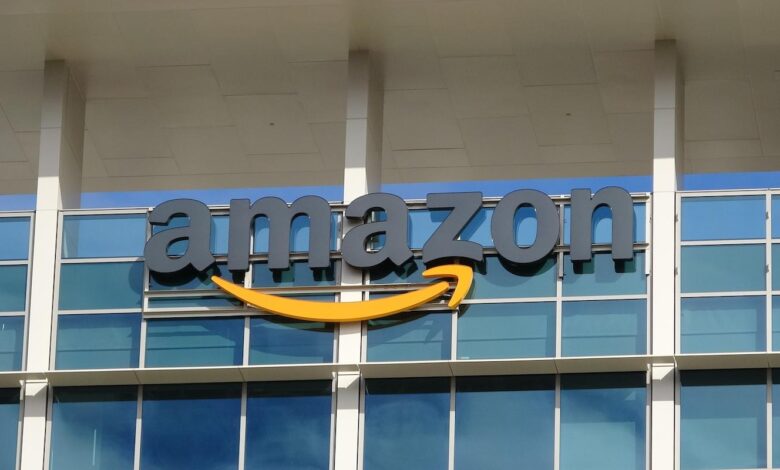How does Amazon close a business designed to take on Kroger, Walmart?

Explore the strategic choices and business dynamics as we delve into how Amazon close a business navigates the closure of an undertaking designed to compete with retail giants like Kroger and Walmart. Uncover the insights in the back of Amazon’s adaptive method and the consequences for the ever-evolving panorama of e-commerce and retail competition.
Amazon reduced several of its brick-and-mortar goals last year. As the corporation lay off employees, it also abandoned its fashion and “5 Star” brick-and-mortar initiatives. These layoffs occurred shortly after the business shut down its bookshops.
Intro to Amazon close a business designed to take on Kroger, Walmart
The retail behemoth, on the other hand, remains optimistic about its physical outlets. Amazon (AMZN) continues to manage Whole Foods and has been gradually expanding its Amazon Go convenience shops, while also licensing its “grab and go” technology to other merchants.
And, while Whole Foods has a national presence, it is mostly a niche brand. Amazon attempted to broaden its portfolio by introducing Whole Foods 365. That endeavour, however, failed, and the business closed those facilities as well.
That left Amazon with only two grocery alternatives. The initial physical Amazon Fresh locations were designed to compete with established supermarket chains such as Kroger (KR) and Publix, as well as Target (TGT) and Walmart’s (WMT) food departments.
Amazon has delayed the addition of new Amazon Fresh brick-and-mortar grocery stores, after initially envisioning a big countrywide presence for the brand. The business has also discreetly ended another initiative to get people to purchase their food from Amazon, with a different take on how that worked.
Amazon and Kroger are attempting to innovate.
Kroger (KR) has been expanding its grocery delivery services in regions where it does not possess physical shops. This is a more cost-effective strategy for the firm to grow into new areas while utilizing the existing supply chain.
The supermarket chain, which is attempting to obtain regulatory permission for its $24.6 billion merger with Albertsons (ACI), may service additional consumers from a distribution centre without constructing physical shops. In principle, after the firm has gained enough clients with its delivery service, it may make sense for it to expand into physical locations.
Amazon had been operating AmazonFresh Pickup locations. These were physical locations where customers could pick up food products bought online or through Amazon.com. GeekWire stated that the firm secretly closed the final two pick-up-only facilities in early 2022. AmazonFresh Pickup, which debuted in 2017, was a disruptive attempt to transform how customers shopped for groceries while minimizing the cost of delivery.
Amazon made some hard brick-and-mortar choices
Amazon CEO Andy Jassy joined the business enterprise’s fourth-sector profits name in Feb. 2022 to explain how the company’s function on bodily stores had changed. That changed into definitely something his predecessor Jeff Bezos hardly ever did, typically leaving the quarterly briefings to the employer’s CFO.
Jassy, alternatively, joined the convention to discuss the enterprise’s price range cutbacks, which have had a tremendous effect on its brick-and-mortar targets.
When we examined some of our physical business investments, or physical store investments, I believe there were a few areas where we lacked confidence that they would be game changers for Amazon.That’s why we closed our 4-Star shops,” he defined.
Jassy made it plain that the organization turned into not leaving behind its improvement plans, which blanketed meals shops.
“We decided to go slower on some, on the physical store expansion in the grocery space until we had a format that we really believed in rolling out,”he went on to explain.
The CEO also discussed the issues the organization asks itself before deciding to invest in a new sector.
We wonder if, if we had been successful, it’d be massively sufficient to trade the needle at Amazon, that could be a tough bar for a business enterprise like Amazon. Do we keep it in mind to be served properly today? Do we have a unique approach? And are we able to have any competence in those areas? And if we do not have them, can we get them quickly? And if we much like the answers to those questions, we are able to invest,” he said.
Despite a hard year, Amazon’s stock increased with the useful resource of 80.Nine% in 2023. Shares fell four.Four% to $a hundred forty five.24 on the start of 2024.
Conclusion:
In the aggressive vicinity of retail, Amazon’s selection to close an industrial organization geared toward rivalling Kroger and Walmart unveils a nuanced narrative of adaptability and strategic recalibration. As we end this exploration, it will become evident that the e-trade large’s adventure entails steady evaluation, gaining knowledge of, and a willingness to reshape its method. The closure now not maximum correctly displays the dynamic nature of the industry but additionally underscores Amazon’s willpower to stay agile in a panorama in which innovation and flexibility are paramount.”



